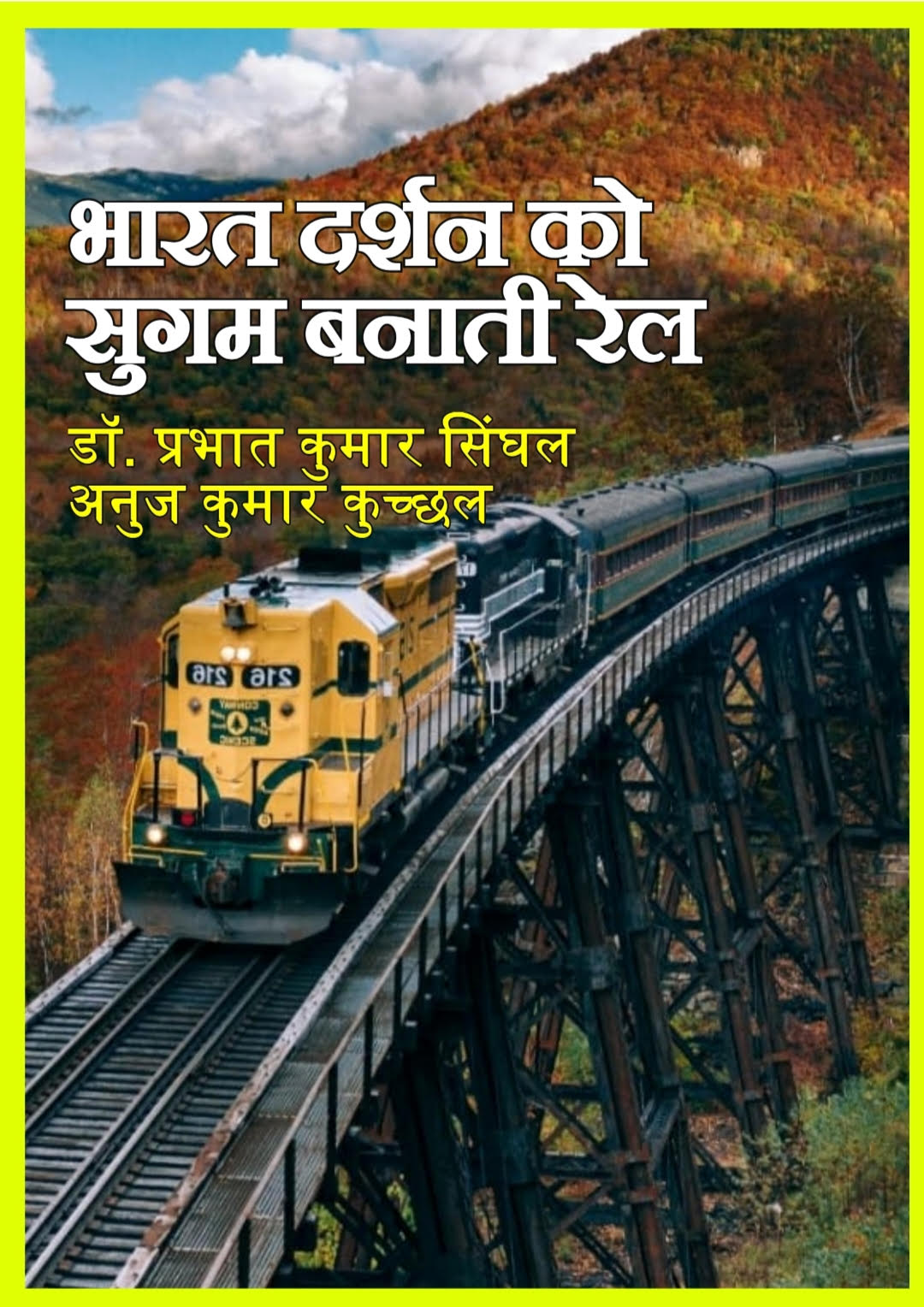
India, with its breathtaking beauty and rich cultural, historical, and natural heritage, holds a distinctive place among the world’s leading tourist destinations. Each Indian state offers unique and mesmerizing features that attract travelers from across the globe. Among the various modes of transport available to explore this vast and diverse country, the Indian Railways stands out as the most accessible, economical, comfortable, and eco-friendly option that also saves time. With rapid technological advancement, Indian Railways has added new dimensions to travel, opening exciting possibilities for tourism.
Modern developments like trains operating at speeds of 160 km/h, premium services like Tejas Express, breathtaking Vistadome coaches, double-decker trains, and luxurious royal tourist trains have turned rail journeys into an integral and attractive part of tourism. These well-developed facilities particularly appeal to travelers in search of serenity, mystical landscapes, and thrilling adventures.
The picturesque views from the train windows—lush forests, dramatic valleys, towering mountains, winding tracks, deep gorges, scenic tunnels, majestic bridges, rivers, and captivating sunrise and sunset scenes—offer travelers a visual feast. Additionally, traveling with people from different states allows passengers to experience India’s diverse attire, dialects, cuisine, customs, and mutual cooperation, offering a microcosmic experience of the country's culture. This is perhaps why Mahatma Gandhi once referred to Indian Railways as a “Mini India.” In essence, it is through the Indian Railways that the dream of a true Bharat Darshan (India exploration) becomes a reality.
With continuous enhancement of passenger amenities, Indian Railways plays a significant role in boosting domestic tourism. Its vast network connects all major tourist destinations in the country. Suburban and metro rail services in major cities also contribute greatly by providing quick and affordable access to distant attractions, in contrast to the expensive and exhausting alternatives like buses or taxis.
The book Bharat Darshan Ko Sugam Banati Rail is an insightful manifestation of this very background. Written in a lucid and engaging style, the book presents the evolution and current scenario of railway tourism in a way that makes the reader feel as though they are traveling alongside the authors. The book is structured into nine chapters covering themes such as upcoming railway tourism projects, innovations by IRCTC, attractive tour packages, interesting facts, scenic train journeys, suburban and metro railways linking tourist destinations, and how Indian Railways brings travelers closer to iconic landmarks. Unique features such as the Kohinoor Toy Train, beautiful railway stations, and fascinating rail museums add further charm.
Through its factual, analytical, and engaging narrative, the book brings readers face-to-face with the constantly evolving, multidimensional, and almost magical reality of Indian Railways. It narrates a comprehensive and colorful story of the railway’s role in Indian tourism—from its history to its modern marvels and future potential.
The book is a bouquet of varied experiences. One can sense the red hues of Kashmir in one page, the mystical beauty of nature on another; one paragraph carries the fragrance of Punjab, another echoes the melody of Tamil Nadu. From Uttar Pradesh to Maharashtra, Gujarat to Rajasthan, West Bengal to other regions—this book takes you across the entire country. Just befriend the Indian Railways and pick up this book, and you're already halfway through your journey.
In their author's note, the writers emphasize, “Traveling is a cherished desire for everyone. Among all modes of transport, the Indian Railways stands out as the most reliable, safest, cheapest, widely available, fast, and popular medium. The mesmerizing visuals of Indian landscapes—rural settings, cityscapes, fields, forests, rivers, valleys, mountains, and oceans—during train journeys are unforgettable. Gandhi called it ‘Mini India’ for a reason, as one gets to meet people from various states and experience their languages, cultures, and attire firsthand. Indian Railways plays a crucial role in promoting tourism, and the thrill of train journeys simply can’t be captured in words. Even foreign tourists are drawn to luxury trains like Palace on Wheels, Darjeeling Toy Train, Kalka–Shimla Railway, and The Fairy Queen. This book is written to highlight the importance and utility of Indian Railways in the context of Indian tourism. Without Indian Railways, the vision of national tourism remains incomplete.”
The book’s cover is attractively designed in line with the subject. The inclusion of photographs at several points further enhances reader engagement and curiosity.
The authors—Dr. Prabhat Kumar Singhal, a well-regarded public relations officer, journalist, and columnist from Kota, Rajasthan, and Anuj Kumar Kuchhal, a railway engineer, literary enthusiast, and travel lover—are avid travelers who have explored India extensively together. Their firsthand experiences enrich the book with authenticity and passion. The combination of journalistic insight and technical knowledge makes this book both informative and captivating.
This book is expected to prove highly valuable for both tourists and tourism professionals alike.